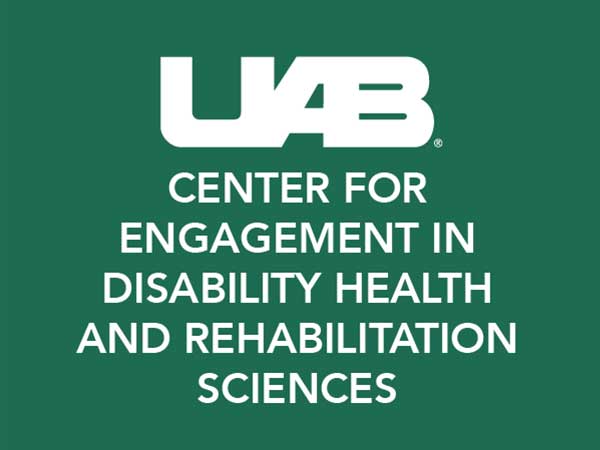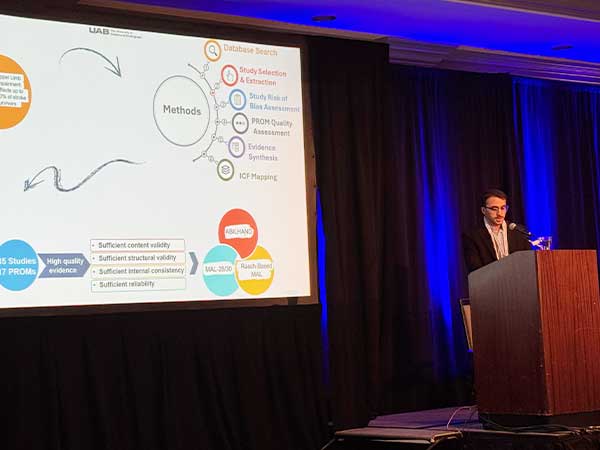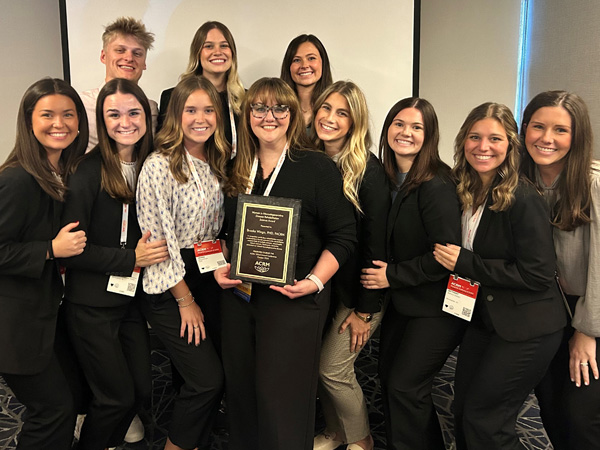 The CEDHARS Seminar Series, co-sponsored by the Rehabilitation Sciences PhD program, has returned, kicking off with a pair of presentations on Thursday, March 24, and Tuesday, March 29, featuring presentations on optimizing patient outcomes.
The CEDHARS Seminar Series, co-sponsored by the Rehabilitation Sciences PhD program, has returned, kicking off with a pair of presentations on Thursday, March 24, and Tuesday, March 29, featuring presentations on optimizing patient outcomes.
Dr. Liang-Ching Tsai, associate professor of physical therapy at Georgia State University, gave a talk called “Obstacles on the Road to Recovery Following Traumatic Knee Injuries – Implications for Optimizing Patient Outcomes.”
Tsai discussed how following a traumatic knee injury such as an ACL tear, despite reconstruction and extensive rehabilitation, significant functional deficits remain in this patient population. The presentation featured Tsai’s research at GSU conducted to address clinical challenges during post-injury rehabilitation in the hope of providing insight into optimizing patient outcomes.
Tsai’s research has recently focused on ACL injuries, as they are one of the most common sports-related injuries and are often non-contact. He also said ACL injuries are more common in women. Recovery typically takes six to nine months but can be accompanied by a quadricep strength deficit up to 28%, re-injury rate up to 30% and a high risk of developing knee osteoarthritis, which can present up to 15 years post-injury.
The most common measures doctors use to clear athletes are time, quadricep test and hop-performance test, but Tsai said there isn’t sufficient scientific evidence to support the protocol. Tsai teamed up with researchers from the Atlanta area to optimize a standard protocol for an athlete’s return to competition.
“We are hoping that we can examine further, and we are expecting an NIH grant so we can continue this line of research,” Tsai said. “Specifically, we want to look at the duration of non-weight bearing after injury and how much weight-bearing activities have an impact on the knee-joint health. And we also want to look at whether the lower-joint deviation from the commotion has anything to do with how much OA they would have eight weeks after surgery.”
Dr. Jaimie Roper, assistant professor in the School of Kinesiology and director of the Locomotor and Movement Control Laboratory at Auburn University, gave a talk called “The Right Place but Not the Right Time: The Role of Timing in Gait in People with Essential Tremor.”
Roper discussed changes in gait, or a person’s manner of walking, in essential tremor, which is one of the most common movement disorders in older adults and how researchers can improve measurement techniques, impacting patient outcomes related to gait that can be used by both scientists and practitioners.
“Gait speed decreases at a faster rate as people with essential tremor age compared to neurotypical aging,” Roper said. “And then when we try to pull out individual features of gait that represent how people with essential tremor walk and relate those back to clinical measures of disease severity, we see that pace and stability are related to clinical aspects of essential tremor, and rhythm and other timing measures, cue the title of the talk, we don’t see a connection to clinical measures.”
Roper said people with essential tremor can adapt their gait by completely altering their timing mechanisms. Traditionally, re-training someone’s gait with essential tremor has been done through using a split-belt treadmill, which allows adaptable sped and rhythm for the patient, and historically, step length assymetry has been used to measure disease severity. Roper said step length doesn’t seem to be associated with gait timing, but counterintuitively it is.
Roper approached the issue of timing in people with essential tremor with the question of whether patients legitimately can’t adapt or won’t, so she studied if they could induce correction in timing by not allowing them to adjust where they place their feet in gait.
Roper’s research has recently focused on giving more direct commands to patients on how to walk for measurements and the effect the number of people in a room has on walking speed. She and her graduate students came up with a list of different commands, such as: “walk like a big dog,” “like a small dog” or “like you’re having a bad day.” The study found that gait is significantly affected by how the researcher instructs the patient, which Roper believes will go a long way to improving measurement techniques.
The CEDHARS seminar series takes place once to twice a month on Thursdays at noon, and is currently offered as a hybrid event, both in person and via Zoom. Lunch is provided for the first 20 in person attendees. The next seminar will take place on April 21 in SHPB 224 and will feature occupational therapist, Rachel Ashcraft. Information on seminars is listed in the Upcoming Events section of the CEDHARS newsletter and can be found on the News and Events page of the CEDHARS website.

